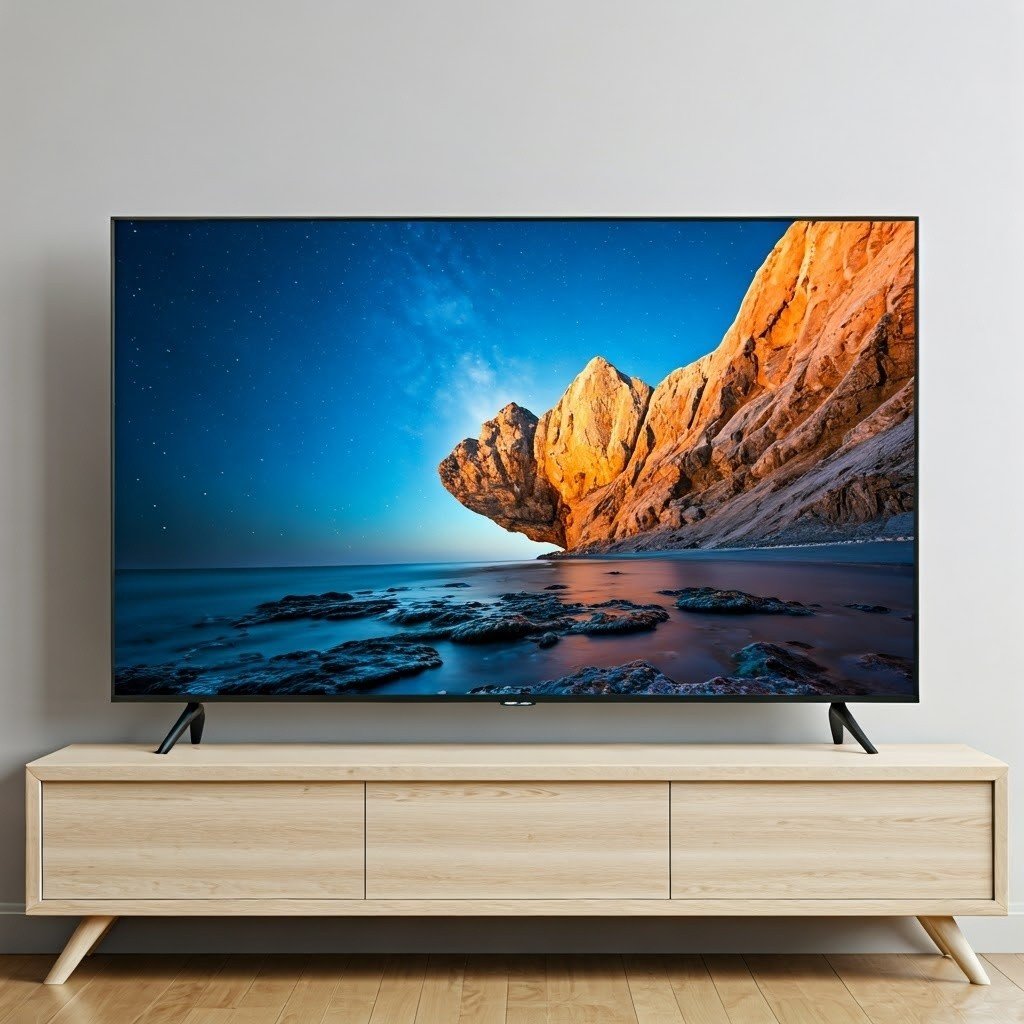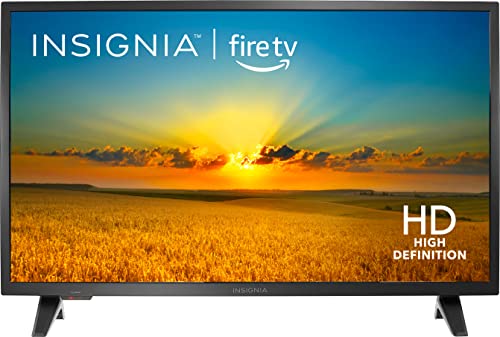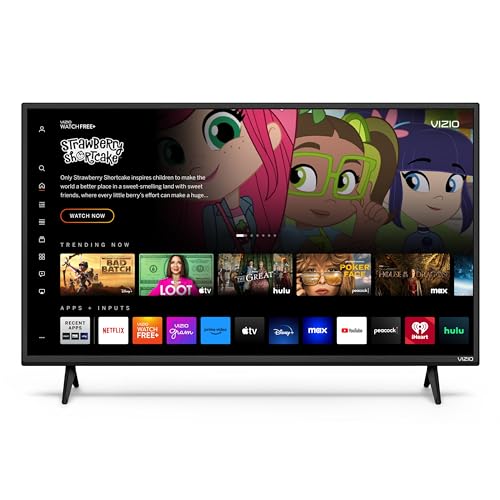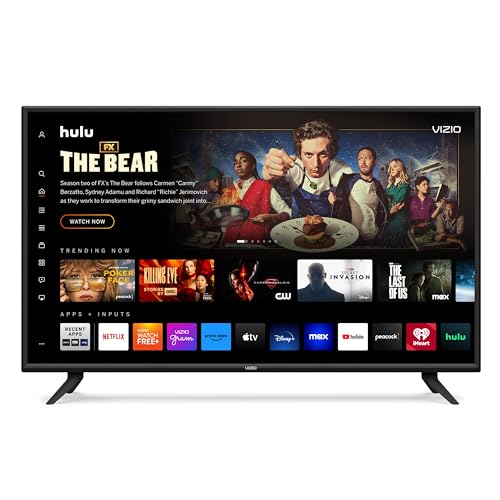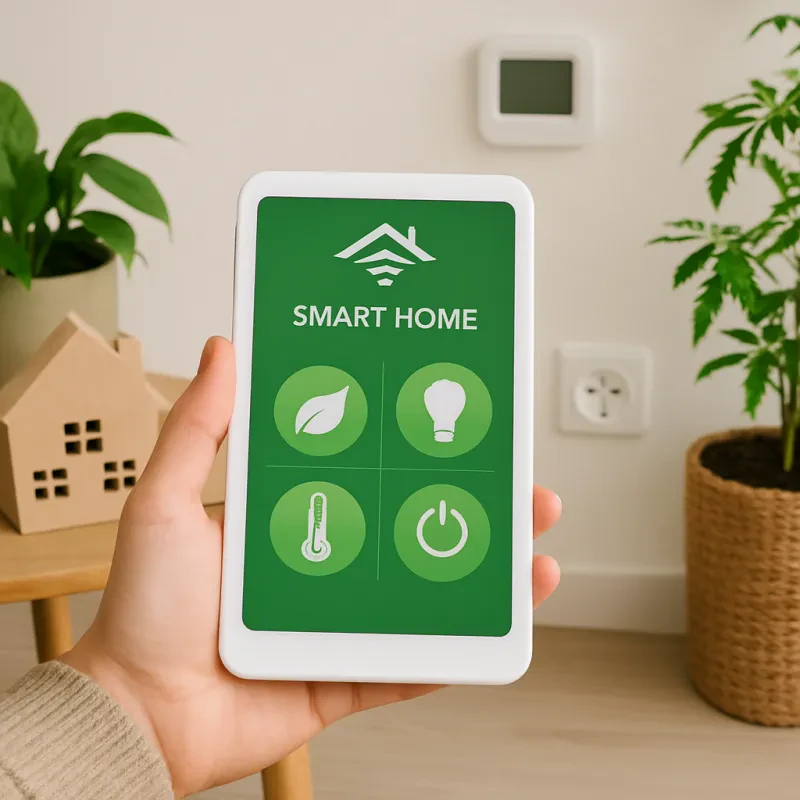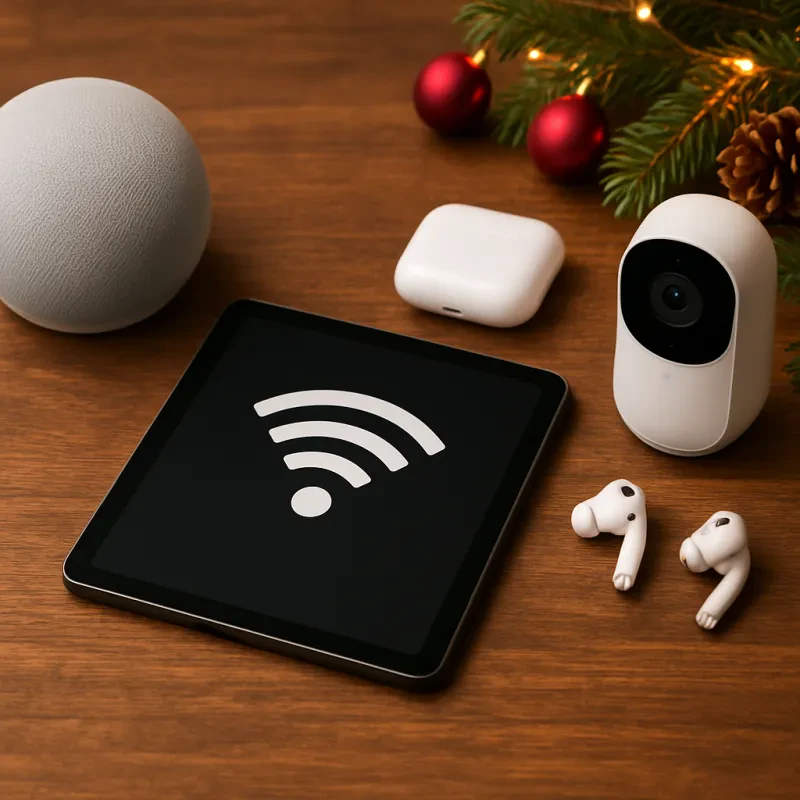Introduction to Smart TVs in 2025
Smart TVs represent a significant evolution in the way we consume entertainment, combining television functionality with advanced computing capabilities. As we look toward 2025, these devices are no longer just a medium for broadcasting channels; they have transformed into comprehensive entertainment hubs that provide access to a multitude of streaming services, applications, and interactive features. The integration of intelligent technology within smart TVs facilitates personalized viewing experiences, enhancing user engagement and satisfaction.
The journey of smart TVs began with basic internet connectivity and the ability to stream content. Over the years, advancement in technology has led to the incorporation of sophisticated features such as voice recognition, artificial intelligence, and seamless connectivity with various smart devices. In 2025, we expect the trend to continue as manufacturers focus on developing faster and more intuitive interfaces. These interfaces will make navigating between diverse applications and services more user-friendly and efficient.
Today’s smart TVs are designed with high-level processing power and responsive interfaces, which drastically improve the user experience. Innovations such as machine learning algorithms allow devices to learn viewer preferences, providing tailored recommendations that simplify content discovery. Enhanced graphical interfaces enable smoother transitions and quicker access to a wide range of features and applications without lag, thereby solidifying their place as essential devices in modern households.
As we progress into 2025, the competition among technology manufacturers ensures that users will benefit from a selection of advanced smart TVs that prioritize fast interfaces and superior usability. This heightened focus on improving user experience will set the stage for a detailed exploration of the top smart TV models that excel in these areas, solidifying their relevance in today’s entertainment ecosystem.
The Importance of User Interface Speed
The user interface (UI) speed is a critical aspect of modern smart TVs that significantly influences viewer satisfaction and engagement. As technology advances, consumers increasingly expect seamless experiences when navigating through their devices. A fast user interface can greatly enhance the functionality and usability of smart TVs, ensuring that users can effortlessly switch between apps, access streaming content, and customize settings without delays. When the UI is responsive, users are more likely to enjoy their viewing experiences, as frustrations associated with lagging interfaces are minimized.
Common frustrations include delays in app loading, slow scrolling through menus, and prolonged buffering times, which can detract from the overall entertainment experience. For instance, imagine a viewer attempting to browse the latest movies on a streaming platform; a sluggish interface can lead to annoyance and dissatisfaction, prompting users to lose interest or abandon the task altogether. Conversely, a fast user interface fosters a more enjoyable interaction, encouraging users to explore new features and content without hindrance.
Furthermore, the speed of a smart TV’s user interface directly impacts how efficiently users can engage with built-in applications and online services. In an era where multitasking and instant access to information are paramount, a TV that responds promptly to user inputs is essential. This responsiveness allows for swift transitions, effective searching, and a generally smoother user experience, making the television a more versatile entertainment hub within the home. As smart TVs evolve toward 2025, prioritizing user interface speed will be integral in attracting consumers who value both quality content and a modern, intuitive interaction.
Key Features of Fast Interfaces in 2025 Smart TVs
As the entertainment landscape continues to evolve, the significance of fast interfaces in smart TVs becomes paramount. The performance of a smart TV's interface is largely determined by several critical features, including processor power, RAM, operating systems, and software optimizations.
One of the core components contributing to a swift interface is the processor. In 2025, manufacturers are likely to integrate advanced multi-core processors that can handle multiple tasks simultaneously without compromising speed. This hardware enhancement allows notifications, browsing, and application loading to occur seamlessly, providing viewers with a responsive experience. Furthermore, the processor's architecture plays a vital role in supporting the rich graphical interfaces that users have come to expect.
In addition to processing power, the amount of RAM installed in the smart TV significantly influences interface performance. Higher RAM capacity allows for better multitasking capabilities, enabling users to switch between applications and access various functionalities without noticeable delays. As applications become increasingly complex, a sufficient RAM allocation will be crucial for maintaining an efficient performance.
The operating systems utilized by smart TVs will also impact their interface speed. Newer versions of platforms, such as Android TV, Tizen, and webOS, are designed to optimize resource usage and provide smoother navigation. Innovations in user interface design will enhance both aesthetics and functionality, ensuring that users enjoy a fast and intuitive experience.
Software optimizations cannot be overlooked, as they often involve updates that improve interface responsiveness and eliminate bugs that might hinder performance. Regular software updates will be necessary to take full advantage of the hardware capabilities and maintain a fast user experience. Lastly, a robust internet connection is essential for streaming content and accessing cloud services efficiently; therefore, smart TVs in 2025 will likely require compatible high-speed internet provisions to maximize their potential.
Top Smart TV Brands Leading the Way in 2025
As we glance toward 2025, the smart TV market is evolving rapidly, with several brands emerging as leaders in enhancing entertainment technology. LG, Samsung, and Sony are at the forefront, each adopting distinct strategies to improve interface speed and overall user experience. These brands are committed to integrating innovative technologies that not only enrich the viewing experience but also simplify the user interaction with their products.
LG has made significant strides with its webOS platform. The latest iterations showcase a streamlined interface that allows users to switch between applications with minimal lag, ensuring a smooth experience. Moreover, LG’s commitment to AI integration further enhances personalization, allowing viewers to receive tailored content recommendations based on their viewing habits. This focus on user-friendliness positions LG as a strong contender in the race for the best smart TV.
Samsung, known for its QLED technology, continues to impress by refining its Tizen OS. In 2025, Samsung aims to harness the power of advanced machine learning algorithms to predict user preferences, allowing for a more intuitive navigation experience. The brand’s robust gaming features, designed especialmente for avid gamers, ensure that performance remains a top priority, making it a favored choice for households seeking cutting-edge entertainment.
Sony, partnering with Google, leverages the Android TV interface to provide a diverse range of applications alongside seamless access to popular streaming services. With an emphasis on high-definition picture quality and immersive sound systems, Sony maintains a competitive edge. Their continuous enhancements to the interface, coupled with a focus on enhancing user engagement through voice control features, reflect a well-rounded approach that resonates with tech-savvy consumers.
In summary, the leading brands in the smart TV market in 2025—LG, Samsung, and Sony—are each paving different pathways toward advanced interface speed and enhanced user experience. Their continuous innovation in smart TV technologies indicates a bright future in the realm of digital entertainment.
Comparative Analysis of Smart TV Models
The market for smart TVs has evolved significantly, and as we approach 2025, several models stand out due to their fast interfaces and user-friendly experiences. This comparative analysis considers key players such as Samsung's Neo QLED series, LG's OLED lineup, and Sony's BRAVIA XR models. Each of these brands brings distinct specifications to the table that cater to varying consumer preferences regarding interface speed.
Samsung's Neo QLED TVs are renowned for their Quantum Dot technology, which not only enhances picture quality but also contributes to a responsive Smart Hub interface. Users consistently praise the quick navigation through apps, thanks to the Tizen operating system's optimization. Review scores reflect a trend where users prioritize seamless transitions and reduced load times, making Samsung a notable competitor in smart TV technology.
On the other hand, LG's OLED models utilize the webOS platform, which is frequently lauded for its clean layout and ease of use. However, some users have raised concerns about occasional lag when multitasking between high-demand applications. Despite this, the overall experience remains robust, especially with the addition of AI features that learn user preferences over time, enhancing interface speed and functionality.
Lastly, Sony's BRAVIA XR integrates Google TV, offering a powerful recommendation system alongside an intuitive interface. Users have reported an efficient navigation experience with quick access to both streaming services and personal libraries. Additionally, the integration of advanced voice control options has further streamlined user interactions, solidifying its place among fast-responding smart TV options.
Each model presents a different interpretation of what an efficient interface should be, but the consistent feedback highlights the importance of fast response times and intuitive designs. By analyzing user reviews and technical capabilities, this comparative overview outlines how these smart TVs rank within the increasingly competitive landscape leading into 2025.
Consumer Insights: What Users Value in Smart TV Interfaces
As the landscape of entertainment evolves, understanding what consumers prioritize in smart TV interfaces has become pertinent. Recent surveys and user testimonials reveal a wealth of insights regarding user preferences, drawing attention to the features that enhance the viewing experience and the challenges that often frustrate users.
A significant portion of respondents emphasize the importance of navigation speed and ease of use. For many users, the interface's responsiveness is a crucial factor that directly influences their overall satisfaction. In fact, data indicates that approximately 68% of consumers prefer smart TVs with interfaces that load applications quickly, allowing seamless transitions between different streaming services. The user experience is notably enhanced when the interface supports fluid scrolling and immediate accessibility to content.
Moreover, customization options have emerged as a key priority. Users increasingly appreciate interfaces that provide personalized recommendations based on viewing habits. Feedback from surveys indicates that approximately 55% of users find tailored suggestions beneficial in streamlining their content discovery process. This capability not only enriches user engagement but fosters a deeper connection with the device itself.
However, it is not all positive feedback; many users report encountering issues related to connectivity and app availability. Approximately 42% of participants noted frustrations with lagging connections and apps frequently crashing or not being updated. Additionally, the majority of respondents voiced a desire for more integrated technology, such as voice control capabilities and universal search that spans multiple platforms. These features align with the desire for a more cohesive and user-friendly experience across various content sources.
Overall, consumer insights reveal a clear trend: users value an interface that is responsive, personalized, and dependable. As smart TV technology continues to advance, manufacturers that heed these insights will likely gain a competitive edge in shaping the future of entertainment experience.
Future Trends: What's Next for Smart TV Interfaces?
The landscape of smart TV interfaces is poised for significant transformation as we look beyond 2025. With rapid advancements in technology, several key trends are emerging that promise to enhance user experiences and redefine how viewers interact with their televisions. One of the most notable trends lies in the integration of artificial intelligence (AI). AI-powered interfaces will likely offer a more personalized viewing experience, learning users' preferences over time and suggesting content tailored specifically to their tastes.
Voice control is another crucial aspect expected to shape the future of smart TV interfaces. As speech recognition technology continues to evolve, users will be able to navigate their smart TVs simply by speaking commands. This hands-free operation will streamline the way we interact with our devices, making it easier to access content and control settings without the need for remote controls. Furthermore, advancements in natural language processing will enhance the precision of these voice commands, providing a seamless and intuitive experience.
Additionally, machine learning applications are set to refine smart TV interfaces further. These applications can analyze viewing habits and behavioral patterns, enabling TVs to adapt in real time to user preferences. For instance, if a user frequently watches cooking shows, the interface may automatically prioritize related content in their recommendations, optimizing their viewing experience. This dynamic adaptation will create a more engaging platform that keeps viewers coming back for more.
Moreover, the rise of augmented reality (AR) and virtual reality (VR) technologies could introduce immersive viewing experiences that transcend traditional formats. As these technologies become more integrated into smart TV interfaces, users may find themselves not only watching content but actively participating in it.
In summary, smart TV interfaces are on the brink of an exciting evolution driven by artificial intelligence, voice control, machine learning, and immersive technologies. These advancements are expected to create a more user-friendly, personalized, and engaging viewing experience as we move towards 2025 and beyond.
Expert Recommendations for Choosing the Best Smart TV
When selecting a smart TV in 2025, consumers should prioritize several key considerations to ensure they invest wisely in a device that meets their entertainment needs. One of the crucial factors to evaluate is the performance metrics of the smart TV. This includes assessing the processor speed, RAM, and storage capacity, as these components directly influence the overall responsiveness and efficiency of the user interface. A powerful processor allows for seamless multitasking, streaming, and browsing, making it essential for a smooth viewing experience.
User interface plays a significant role in the everyday usability of smart TVs. When exploring various models, it is advisable to read user interface reviews that detail the experiences of current owners. Look for smart TVs that feature intuitive layouts, customizable options, and quick access to popular streaming services. A well-designed interface contributes significantly to user satisfaction and can elevate the entire entertainment experience.
Additionally, consider the smart TV’s connectivity options and compatibility with other devices. In 2025, having a device that supports a broad range of streaming applications and integrates easily with other smart home devices will enhance convenience. Users should verify the presence of Wi-Fi 6 capability, multiple HDMI ports, and support for voice command features, as these aspects can significantly improve the performance of the smart TV.
Best practices for evaluating different models should include visiting electronic retail stores to physically test the devices before purchasing. Pay close attention to the interface speed and responsiveness when navigating menus and applications. Lastly, always check for software updates as manufacturers frequently enhance the performance of smart TVs through updates. By adhering to these recommendations, consumers can confidently choose a smart TV that not only meets their expectations but also stands the test of time as technology evolves.
Conclusion: The Smart TV Landscape in 2025
As we venture into 2025, the evolution of smart TVs is prominently shaped by advancements in technology and user preferences. Throughout this blog, we have explored various facets of smart TVs, with a particular emphasis on the importance of fast and efficient interfaces. A smooth and responsive interface not only enhances user satisfaction but also plays a critical role in how viewers interact with their devices. As users increasingly demand seamless navigation, leading manufacturers have prioritized the development of interfaces that minimize latency and maximize user engagement.
In 2025, smart TVs will likely feature integrated artificial intelligence and machine learning capabilities, further streamlining user interaction. This will enhance personalization and allow viewers to customize their viewing experience as never before. Consumers can expect interfaces that intuitively understand user habits, providing quick access to preferred content through voice commands, gestures, or intelligent recommendations. Such advancements signify a vital shift in the entertainment landscape, as viewers seek technologies that cater to their individual preferences.
Furthermore, connectivity and interoperability among devices will amplify the significance of smart TV interfaces. In an era where households are becoming increasingly connected through smart home technologies, it becomes essential for smart TVs to serve as central hubs for controlling various other devices. This not only makes remote control easier but also fosters an integrated entertainment ecosystem. Therefore, when selecting a smart TV in 2025, it is paramount that consumers prioritize models that not only offer stunning visuals but also feature advanced and fast interfaces capable of handling the increasing demands of modern entertainment.
